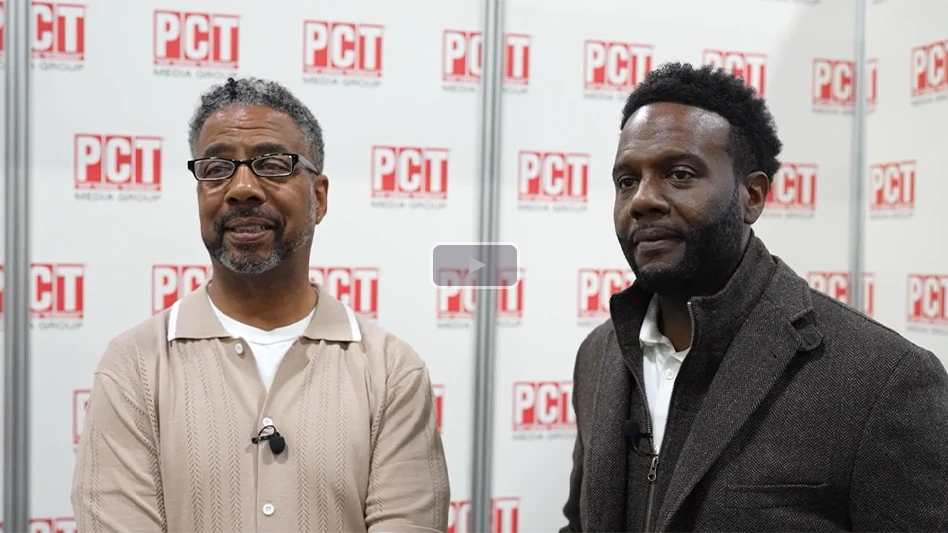
Hayden Maynard
By Donna DeFranco
Illustrations by Hayden Maynard
Common sense tells us that employees who are engaged and happy on the job are more likely to stay. But Gallup recently reported a more sobering truth: Highly talented employees who are not engaged are among those most likely to leave — as likely, in fact, as employees with a low level of talent and/or performance issues.
This shouldn’t be a surprising revelation. High-talent employees tend to have higher expectations for their workplace, and they know they have options — opportunities with other companies to grow and develop their skills, and to be appreciated, rewarded and engaged in a meaningful way. Unfortunately for you as a business leader, they are the most difficult and expensive employees to replace. Plus, they may take other high performers, along with all of their intangible value (knowledge, insights and morale), with them when they go.
EMPLOYEE ENGAGEMENT? Employee engagement is the level of connection and satisfaction an employee feels with his or her company. Highly engaged employees are enthusiastically committed to their work and their company’s goals, performance, reputation and interests. They feel like part of the team, take pride in their company and their work, and feel gratified at the end of the day.
Jim McHale says that employment engagement is by far the most important component of his firm’s success. “Engaged employees are the backbone of any service company,” says the CEO of JP McHale Pest Management, an Anticimex company. “They are ambassadors of your brand and culture: No one can tell your story better than a happy customer-facing employee. They can also help you innovate and recruit new talent, pulling in family and friends who will do a tremendous job for you.”
How can you work toward fully engaging your own employees? Leaders of some growing pest management companies share five ideas that form the foundation of employee engagement.
5 Steps to Employee Engagement
- Share your mission and vision
- Foster a culture of teamwork
- Offer employees a career path
- Open your door and listen
- Appreciate, recognize and reward
1. Share your mission and vision. One of the main reasons employees quit is that they don’t understand or appreciate leadership’s vision for the company’s future. It’s important to clearly communicate your vision and let employees know that they are part of something larger than themselves and that the work they do matters not only to themselves but to the entire company.
“We hold a kickoff meeting every January, because we feel it’s imperative for everyone who works here to know where we’ve been and where we’re going,” says Sharon Roebuck, operations manager at Eastside Exterminators. “When new employees come in, we do a full day of orientation around the history of the company, sharing our one-, three- and 10-year plans. We want every employee to understand and share our vision.”
Adrienne Sather, director of operations at Guardian Pest Solutions, says that the leadership team there has committed to new communication methods to ensure that all employees, even those working independently in the field, can share the corporate vision. “Many of our technicians leave from their home and have very limited face-to-face communication with other members of the organization, so we have started conducting monthly videoconferences with the service team,” she explains. “This year we will be traveling to every independent site so that we can meet face-to-face with everyone on the team. We are also clearly defining what we want our culture to be as a team and inviting everyone to offer input into this important effort.”
McHale adds that it’s important to communicate not only the broad vision of the company but also day-to-day goals and expectations. Managers make sure they explain their perspective and the context surrounding their instructions to employees. “It’s not enough to say, ‘Do what I tell you to do.’ People want — and deserve — to understand the bigger picture so they can see how they fit,” says McHale. “This approach builds trust and enables you to be a servant leader.”
It also empowers employees to act with empathy, urgency and attention to detail, he says. “Engaged employees are more engaging and open-minded with customers. At the moment of truth, when it’s time to climb through that rat-infested, web-covered crawlspace, our people go in without hesitation because they feel that responsibility to the client and to the company. They recognize that they are making a huge contribution to helping this customer and solidifying our relationship with them.”

Hayden Maynard
2. Foster an environment of teamwork, trust and empowerment. People who feel empowered to do what’s right for customers and the company, and who know they have the support of not only their managers but also their co-workers, tend to be more highly engaged than those who lack this assurance. The pest management industry is known for fostering this type of supportive environment: “We’re like family” is a phrase we hear over and over again.
Ann DiLecce, accounts receivable manager, describes her experience joining JP McHale: “Starting here 12 years ago, I immediately felt the family vibe, which is every bit as strong today. People here truly care about one another. We keep up with everyone’s families, share vacation pictures, celebrate birthdays and offer support in tough times. It all brings us closer and makes us a stronger team. For example, we always share new ideas and brainstorm ways to make our department more productive and efficient.”
In addition to having the potential to propel a business forward, an open exchange of ideas helps employees feel valued and integral to the company’s success.
“When you find an individual who is passionate about what they do, they want to feel their contributions are worthwhile. Creating a culture where team members feel trusted, empowered and heard fosters ownership in their daily work,” Sather shares. “I believe that everyone truly wants to be a part of something bigger than themselves, but they are held back by their self-determined limitations. If your organization can learn ways to stretch those limitations, you are on the right path to engaging and retaining talent.”
Remember to have some fun, too, Roebuck advises, which is an important element of Eastside Exterminators’ collaborative, collegial culture. “I’ve never experienced camaraderie like we have here,” she says. “We work hard, play hard and love what we do. We’re committed to supporting one another and protecting the families we serve. We’ve seen that when we’re all in the same boat, rowing together, we can accomplish amazing things.”
3. Offer employees a career path, not just a job. Without opportunities for development and advancement, employees may become disengaged and demotivated. Discuss their goals with them, discover what motivates them, and help create a path for their success, whether that includes continuing education, broadening responsibilities or other factors.
“When we hire, we choose people whose core values align with the company’s. They may not at the time even know exactly what they want to do in the longer term. We bring them in and set out a roadmap showing them the potential paths they can take, and then we work with them to get them into the right seat, where they like and excel at their job,” Roebuck says. She points to a call center agent whose aspirations to join human resources were fulfilled after the company sent her to HR classes, and a facilities manager who was able to achieve his goal of working in the field after training to become a technician.
McHale agrees that it’s vital to put people into positions where they will be successful. “Early in my career, I made the mistake of promoting technicians into management positions without taking their personality traits into account, and it often backfired,” he says. “It’s great to reach internally to fill open positions, but you need to make sure it’s a good fit. Today, we are big on personality profiles and on being very clear with employees about the expectations of the job and what it will take to get to the next level.”
4. Open your door and listen. One of the most basic ways you can engage employees is by having an open-door policy where they feel free to voice concerns and share ideas. Everyone wants to know that their thoughts are respected.
CFO Michael Coughlan says JP McHale truly values employee insights as the leadership team strives toward improvement. “Each season, we reflect on what we’ve done and adopt three new ideas to increase efficiency and improve operations. Many of these ideas come from people working in the field, on the phones and in our offices — those who are engaged in our processes every day and have important insights to share about how we can improve the customer experience,” he says. “People know that they can talk to anyone at any level about anything that’s on their minds, whether it’s through a casual conversation in the kitchen or an actual meeting.”
5. Appreciate, recognize and reward your staff. Gratitude for a job well done is good for everyone. A bonus, an award, a pizza lunch for a great team effort — there are as many ways to reward employees as there are ways they excel.
At JP McHale, every Election Day is also Staff Appreciation Day, where employees can golf or bowl with teammates, followed by a dinner to celebrate the year’s successes. Managers’ spouses are shown appreciation, too, through gift baskets at Thanksgiving to acknowledge their part in supporting the firm by sacrificing time with their loved one when they need to work long hours. Spouses are invited to a holiday party, and a summer-time family barbecue also signals appreciation to families. “We want every employee to know that we value their dedication to the company,” says McHale.
The author is a frequent contributor to PCT.

Explore the July 2019 Issue
Check out more from this issue and find your next story to read.
Latest from Pest Control Technology
- Webinar: Maximizing Cash Flow — Key Strategies for Business Growth
- WorkWave Announces Wavelytics
- Rising Rat Populations Linked to Warming Temperatures, Urban Growth, Study Finds
- How Might the 2024 Elections Impact PCOs
- Keeping Track of Termite Identification
- Mosquito Joe Earns EPA's PESP Gold Level Designation
- Texas PestVets Coat Drive Collects Over 850 Items for Soldiers’ Angels
- Conquer Ants Fast!





